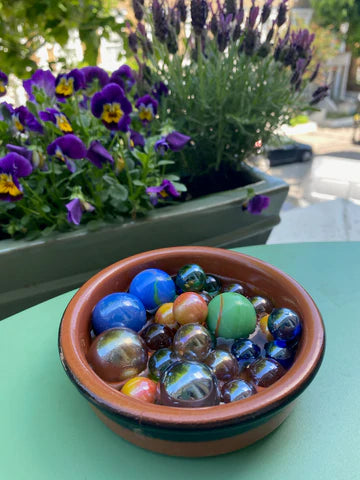Our new L+W team member Jo is a passionate cook, beekeeper and conversationist. Jo has shared with us how to create a water station for pollinators and why this is not only a great activity for young ones, but also a small way to make a big difference in supporting wildlife....
The UK is home to a diverse range of pollinators – ranging from 59 species of butterfly to over 250 species of bee. Sadly, the populations of many of these are in decline. In urban areas this decline is often caused by their habitat being broken up into smaller fragments. Making your garden, balcony or even windowsill into a wildlife space helps join these fragments together and allows pollinator populations space to grow.
Why have a water station for pollinators?
By providing a water station for pollinators in your garden you are cutting down the distance they have to travel whilst foraging. This helps to break up their journey and prevent exhaustion – which is particularly important on hot summer days!
- Pollinators need water just like we do, to keep their bodies functioning healthily. In particular it aids with processes such as digestion.
- On hot days honey bees use water to cool down the temperature of their hive via evaporation.
- Honey bees use water when making honey. They use the water to dilute it and prevent the honey from crystallising.
- Butterflies take up important minerals via drinking water – this is why they can often be found drinking from “dirty” puddles.
To make a water station you will need:
- A shallow dish
- Pebbles, marbles, corks (or any other small items you could upcycle) of a variety of sizes if possible
- Clean water
How:
- Place your pebbles (or other) your shallow dish
- Fill the dish with water to about 2/3 of the way up the marbles. The marbles provide a place for the pollinators to stand whilst drinking as they cannot swim – so be careful to not submerge them completely!
- Place in your garden close to your flowers and in a spot sheltered from the wind
- Replace the water regularly or replenish when empty
You do not need to add any sugar or honey to your water station. Bees and butterflies get a much more nutritious food supply from the nectar and pollen in flowers as opposed to an artificial sugar syrup. Instead try planting:
- Lavender
- Wild strawberries
- Geranium
- Marjoram
- Rosemary
- Thyme
Resources for pollinator friendly gardening:


